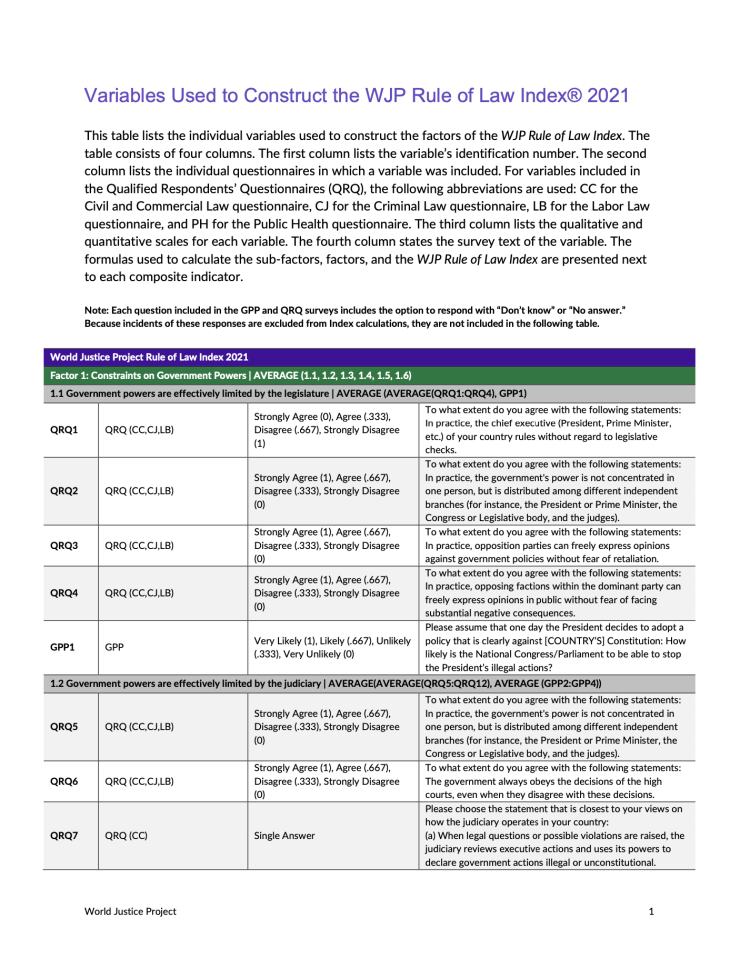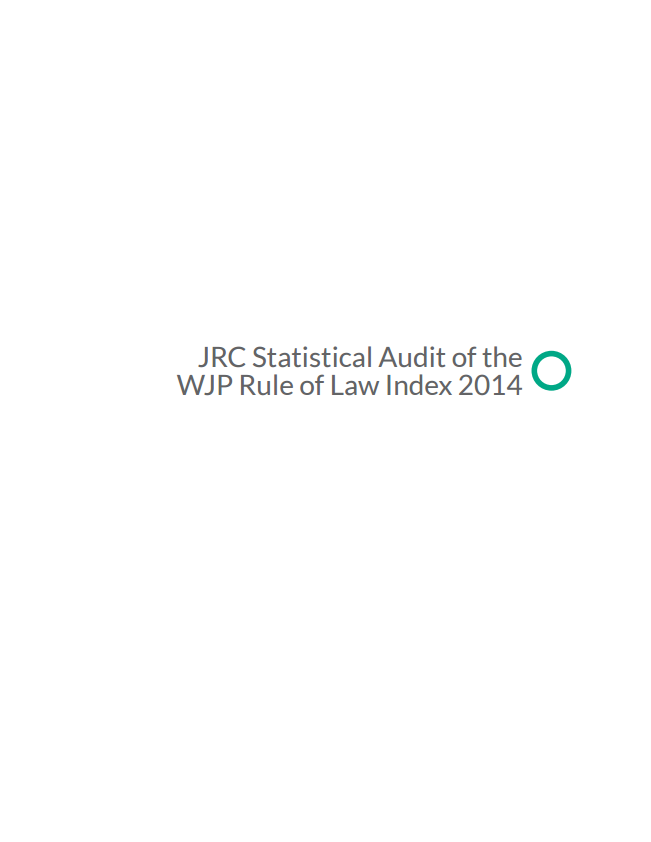The production of the WJP Rule of Law Index® can be summarized in eleven steps:
-
The WJP developed the conceptual framework summarized in the Index’s 9 factors and 47 sub-factors, in consultation with academics, practitioners, and community leaders from around the world.
-
The Index team developed a set of five questionnaires based on the Index’s conceptual framework, to be administered to experts and the general public. Questionnaires were translated into several languages and adapted to reflect commonly used terms and expressions.
-
The team identified, on average, more than 300 potential local experts per country to respond to the experts’ questionnaires, and engaged the services of leading local polling companies to implement the household surveys.
-
Polling companies conducted pre-test pilot surveys of the general public in consultation with the Index team, and launched the final survey.
-
The team sent the questionnaires to local experts and engaged in continual interaction with them.
-
The Index team collected and mapped the data onto the 44 sub-factors with global comparability.
-
The Index team constructed the final scores using a five-step process:
-
Codified the questionnaire items as numeric values.
-
Produced raw country scores by aggregating the responses from several individuals (experts or general public).
-
Normalized the raw scores.
-
Aggregated the normalized scores into sub-factors and factors using simple averages.
-
Produced the final rankings using the normalized scores.
-
-
The data were subject to a series of tests to identify possible biases and errors. For example, the Index team cross-checked all sub-factors against more than 60 third-party sources, including quantitative data and qualitative assessments drawn from local and international organizations.
-
A sensitivity analysis was conducted by the Econometrics and Applied Statistics Unit of the European Commission’s Joint Research Centre, in collaboration with the Index team, to assess the statistical reliability of the results
-
To illustrate whether the rule of law in a country significantly changed over the course of the past year, a measure of change over time was produced based on the annual difference in the country-level factor scores, the standard errors of these scores (estimated from a set of 100 bootstrap samples), and the results of the corresponding t-tests.
-
The data were organized into country reports, tables, and figures to facilitate their presentation and interpretation.
A detailed description of the process by which data is collected and the rule of law is measured is provided in the document below.

Rule of Law Index 2021 - Methodology

Variables Used to Construct the WJP Rule of Law Index 2021


